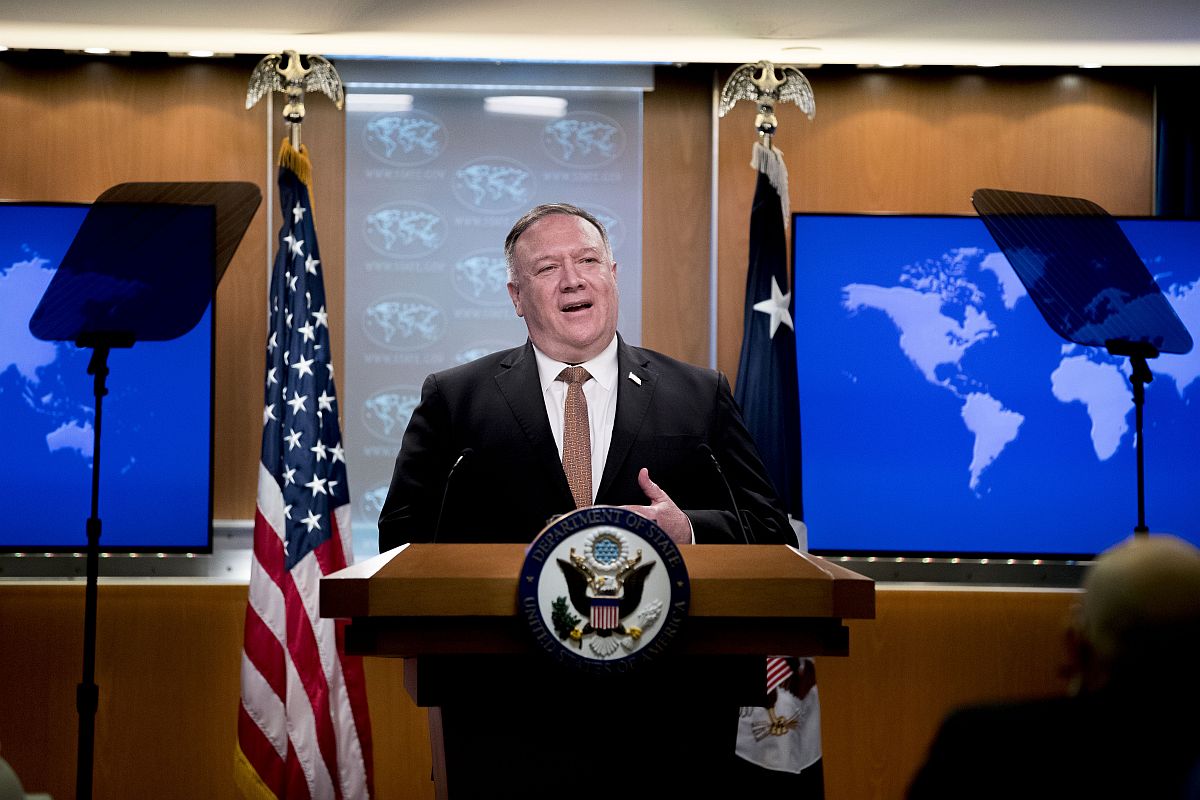China’s territorial claims in Bhutan and the recent incursion into Indian land are indicative of their intentions, US Secretary of State Mike Pompeo said on Thursday, adding that Beijing under Preisdent Xi Jinping was trying to find out whether other countries are going to push back.
He said that with its incursions into the territories of its neighbours, China is “testing the world” and “probing to see if we are going to stand up to their threats, to their bullying.”
“I think the actions are entirely consistent with what they have been signalling to the world for decades you might even argue since 1989 but certainly since General Secretary Xi (Jinping) came to power,” Pompeo told members of the House Foreign Affairs Committee during a Congressional hearing on Thursday.
The secretary of state said China has the desire to expand its power and reach.
“They talk about bringing socialism with Chinese characteristics to the world. Claims that they have now made for real estate in Bhutan, the incursion that took place in India, these are indicative of Chinese intentions, and they are testing, they are probing the world to see if we are going to stand up to their threats and their bullying,” Pompeo said.
It is going to take a global effort to confront the Chinese Communist Party, Mike Pompeo said and mentioned the “idea of a new alliance of democracies” for this. He said there was a lot discussions with “friends in the region” about the shape it would take.
“We are working diplomatically to build out a set of relationships, whether that is a part of a formal organisation or not, I am not sure I know the answer to it yet,” he said.
“I am more confident than I was even a year ago that the world is prepared to do that. There’s a lot more work to do, and we need to be serious about it,” said the top American diplomat.
He said that it is “fundamentally false” to say that the US was “asking nations to pick sides” between Beijing and Washington.
“We are asking every sovereign country to pick between freedom and tyranny and that is choice every leader has got to make,” he said.
“Our diplomatic efforts are working and momentum is building to mitigate the threats that the Chinese Communist Party presents. All 10 ASEAN nations have insisted that the South China Sea disputes be settled on the basis of international law, including UNCLOS (United Nations Convention on the Law of the Sea). Japan led the G-7’s condemnation of China”s national security law targeting Hong Kong,” Pompeo said.
The European Union condemned the law too and also declared China a systemic rival to us, he said.
At the North Atlantic Treaty Organization, Secretary General Stoltenberg has called to make China a greater part of that alliance’s focus.
“We led a multilateral effort to ensure that the United Nations World Intellectual Property Organisation elected a director from a country that cared about intellectual property, the secretary of state said.
“Our QUAD (Quadrilateral Security Dialogue) — the United States, Australia, India, and Japan — has been reinvigorated. We’ve worked hard at this. Our diplomats have done wonderful work. I am very proud of the progress we are making. In addition to these multilateral efforts, Department of Justice is cracking down on Chinese intellectual property threats,” he said.
In his testimony, Pompeo also mentioned that India has banned 106 Chinese applications “that threatened its citizens’ privacy and security.”
The Indian government has banned 47 more Chinese apps from operating in the country, nearly a month after blocking 59 mobile applications. The newly banned ones were largely clones of the previously banned apps.
This is seen as a diplomatic reaction to the Chinese aggression along the Line of Actual Control (LAC) in eastern Ladakh, wherein, 20 Indian soldiers were killed in a violent face-off in Galwan valley on June 15.
US Secretary of State Mike Pompeo, who has been constantly criticising the Chinese Communist Party’s actions against Asian countries, had earlier this month asserted that the world is waking up to the “threats from China” and it will be “confronted like never before” by democracies.
The United States has also criticised the Chinese Army for “escalating” the border tension with India and described the ruling Chinese Communist Party as a “rogue actor.”
Pompeo had also informed that the US was reviewing its global deployment of forces to ensure it is postured appropriately to counter the People’s Liberation Army, given the increasing threat posed by China to Asian countries like India, Malaysia, Indonesia, and the Philippines.
Currently, both India and China are engaged in military and diplomatic deliberation to de-escalate the tense situation at the border areas. The countries are locked in a standoff that is over 11-weeks-old, at multiple points, hitherto unprecedented along the border.
Meanwhile, continuing with its expansionist agenda, China has now created a new border dispute with Bhutan, one of India’s traditional ally.
At a virtual meeting of the Global Environment Facility (GEF) in the first week of June, Beijing objected to the grant for Sakteng Wildlife Sanctuary (SWS) in eastern Bhutan’s Trashigang district bordering India and China, claiming that the location was disputed.
Even as the rest of the world is struggling with the the coronavirus pandemic, which originated in Wuhan city of China’s Hubei province, Beijing has been aggressively attempting to alter the status quo in East China Sea, South China Sea and with India in Arunachal Pradesh and Ladakh.
Bhutan and China have a border dispute since 1984. Talks between Thimphu and Beijing have been limited to three areas of dispute (two in North Bhutan — Jakarlung and Pasamlung areas — and one in West Bhutan). Sakteng is not part of any of the three disputed areas.












